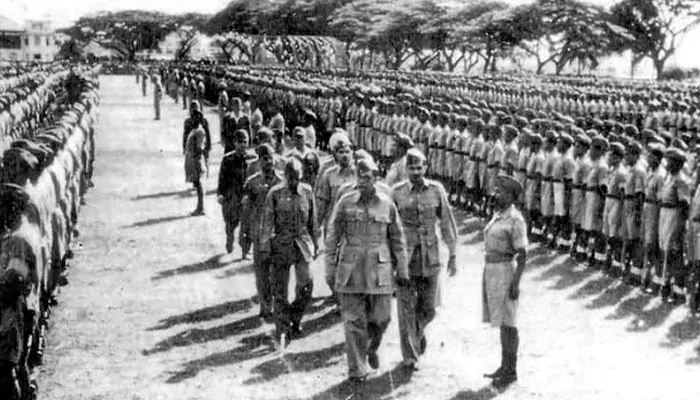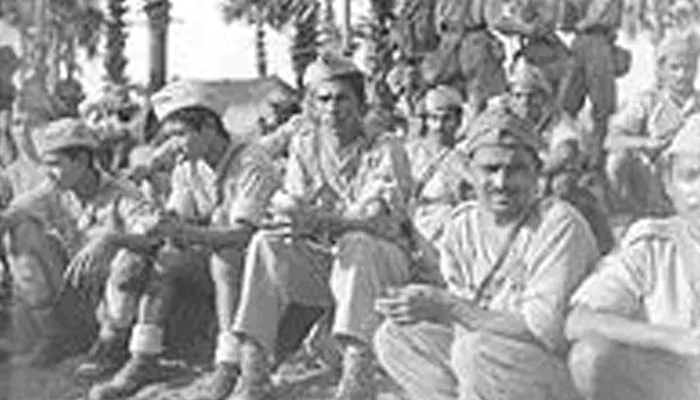
The human cost of Bose's campaigns still haunts the hills of Burma.
In 1943, a new path to India's freedom was drawn—not in Delhi or Calcutta, but in the jungles of Burma. Subhas Chandra Bose, a defiant and driven leader, had a radical idea. He would raise an army, the Indian National Army (INA), and march with Japanese support through British-held Burma into India. It wasn't just a military campaign; it was a leap of faith. But what unfolded on the muddy trails and steep ridges of the Burma Road was one of the harshest sagas in India's fight for freedom. It tested bodies, broke spirits, and took lives.

The INA was born out of prisoners of war—Indian soldiers captured by the Japanese after the fall of Singapore in 1942. When Bose took over in 1943, he gave it structure, purpose, and a slogan that echoed across Asia: Chalo Dilli. Over 40,000 soldiers—including an all-women unit named the Rani of Jhansi Regiment—swore allegiance to a Free India. The idea was revolutionary, but the groundwork was shaky. Supplies were dependent on Japanese logistics. Morale was tested early by hunger, disease, and the doubts of fighting alongside another colonial power.
The INA's major push began in early 1944 as part of the Japanese U-Go offensive. Their route followed the narrow, winding Burma Road through thick forests, across rivers, and into the mountains. The heat was relentless. The rains turned roads into swamps. Mosquitoes carried malaria; drinking water carried cholera. Soldiers walked barefoot, bandaged with rags, some without food for days. For every bullet fired at the British, many more battles were fought within their bodies. Men carried their fallen comrades on makeshift stretchers, refusing to abandon them even when their strength gave way.

In April 1944, the INA achieved a symbolic breakthrough. At Moirang, a small town in Manipur, they hoisted the Indian tricolour on liberated Indian soil for the first time. It was a moment of pride, of tears. But victory was short-lived. The subsequent battles at Imphal and Kohima were brutal. The monsoon arrived early, cutting off supply lines. Japanese reinforcements struggled. British forces held firm. Slowly, the INA's forward push turned into a desperate retreat. It was here that the actual cost of the Burma campaign began to show.
By mid-1944, defeat was undeniable. The INA, starving and sick, had no choice but to turn back. But the jungle showed no mercy. Soldiers collapsed from exhaustion. Some were left behind, too weak to walk. Disease took more lives than combat. Bose himself, leading by example, walked with his men—his boots worn, his body thin. He refused to rest unless his soldiers could. His leadership became legendary, but even legends couldn't stop the flood of suffering. By the time they reached back into Burma, the INA was a shadow of what it had been.

The INA had entered the war with promises of Japanese support, but as Japan faltered, so did its commitment to the INA. Indian troops were often used as porters, not partners. Many were denied medical care. Some were left behind during the retreat. The trust Bose had built with Tokyo now seemed fragile. Despite these betrayals, most INA soldiers stayed loyal—not to Japan, but to Bose, and the cause. Their suffering was not for the empire, but for freedom.
Though militarily defeated, the INA won something else—public sympathy. News of their sacrifice stirred India. When surviving INA officers were put on trial by the British in 1945, it sparked mass protests. Even those who had doubted Bose's strategy now saw the price his men had paid. The trials united Indians across religion and region in outrage. The road from Burma had not led to Delhi, but it had shaken the foundations of British rule.
The Burma Road Marches are a forgotten front in India's freedom story. They weren't battles of glory, but of grit. The INA walked through hell—quite literally—hoping to reach home. They didn't win the war, but they won a nation's heart. The jungle buried many of their names, but their march still echoes. It reminds us that freedom, in the end, is often bought not by weapons, but by the sheer will to walk on—no matter the pain, no matter the path.